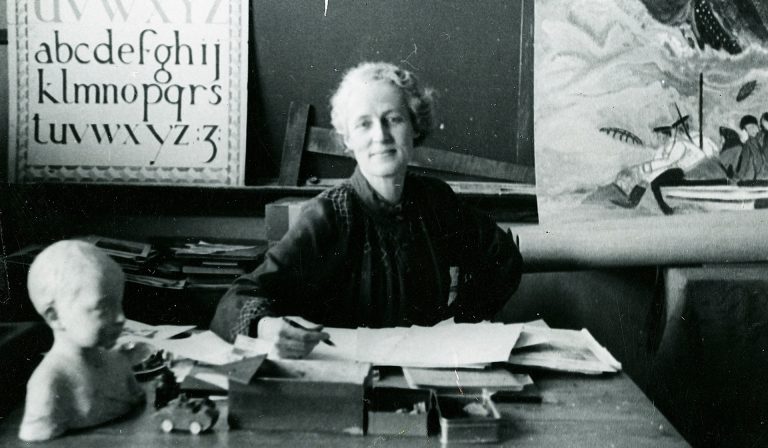The Leonard and Bina Ellen Art Gallery revisits the work of Anne Savage

A new online project at the Leonard and Bina Ellen Art Gallery is taking a second look at the work of Montreal landscape artist Anne Savage (1896-1971).
Anne Savage: A Latent Collection, developed by former Max Stern curator of research Katrie Chagnon and art historian Elizabeth Otto, will launch on May 28.
Savage, a painter and art teacher, was a founding member of the Canadian Group of Painters and for a time was a member of the Beaver Hall Group.
She also had strong ties to Concordia: as a high school art teacher, she taught two co-founders of the Faculty of Fine Arts — Leah Sherman and Alfred Pinsky.
As well, the Anne Savage fonds, the largest collection of her works in one place, is held at the Ellen Art Gallery. Comprised of sketches, drawings and painted panels that were donated to Concordia between 1963 and 2001, it is the gallery’s largest monographic grouping of works.
A critical re-examination
Chagnon says she and Otto took feminist and decolonial lenses to a collection of Savage’s sketches and documents.
“These works have very interesting imagery. There are problematic things too that are articulated in the works,” Chagnon says.
“We tried to show how that body of work was complex, and how this artist was a very complicated figure in how she was involved in the different social, cultural and political structures of her time.”
The Ellen Art Gallery has exhibited Savage’s work many times since the late 1960s, but this project will mark the first time it has been examined critically at the university.
“Her legacy was very much celebrated inside Concordia, but there was no critical examination of the works in terms of contemporary issues,” she says. “The perspective was more biographical, so we wanted to do something else.”
The exhibition involves four texts from Chagnon and Otto that delve into four modes of intervention Savage was committed to: “depicting,” “travelling,” “imagining” and “passing on.”
Online accessibility
Chagnon found that Savage’s sketchbooks were particularly fascinating.
“They haven’t really been shown because they’re considered minor works, but they’re quite telling about the way she approached creation, artistic practice and her relationship to nature,” she says.
“It was interesting, in the university context, to take into account those works that are considered unfinished or process-based.”
The online project also deals with Savage’s time spent travelling as part of a group that was sent to West Coast Indigenous communities to paint and draw their artefacts and ways of life.
“We tried to understand the problematic position of the time regarding Indigenous culture, but also what an artist can reveal about this contact,” Chagnon says.
She notes that Savage’s connections to several influential institutions at the time, such as the National Gallery of Canada, made her a “pivotal actor” in the way art was used by Canadian institutions and government to promote national ideologies.
“We were interested in trying to find what her specific position was on that. She was very ambiguous in how she related to those ideologies that were very strong in the ’20s.”
Chagnon says having the project online will also allow visitors to the website to engage more with Savage’s works.
Where Savage’s sketchbooks would have to be permanently opened to one page for visitors to view, they can be digitally flipped through online. Archival documents that would need to be held under a vitrine can be more accessible.
Visitors can make connections between different elements of Savage’s work “that are not possible in a physical space,” Chagnon adds.
Check out Anne Savage: A Latent Collection on the Leonard and Bina Ellen Art Gallery’s website beginning May 28.


